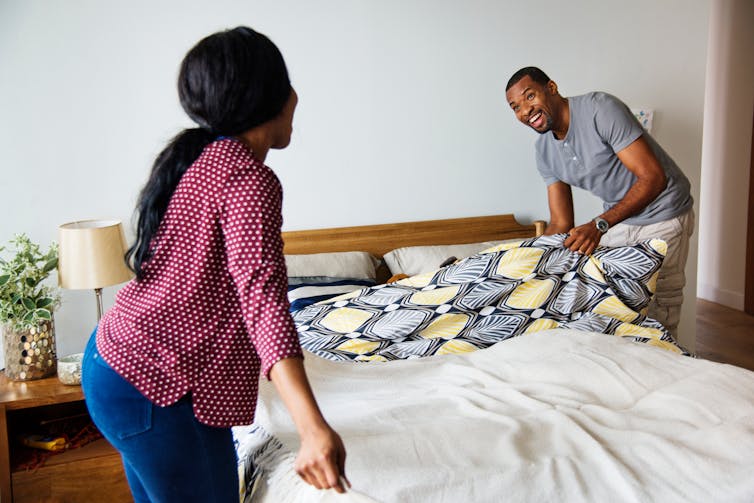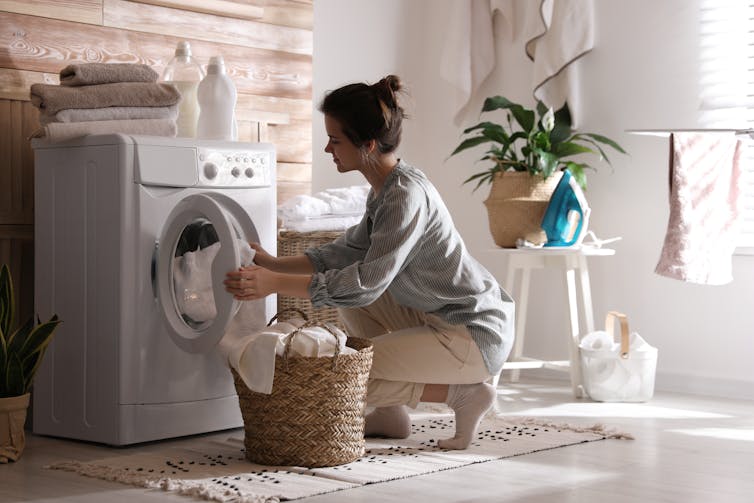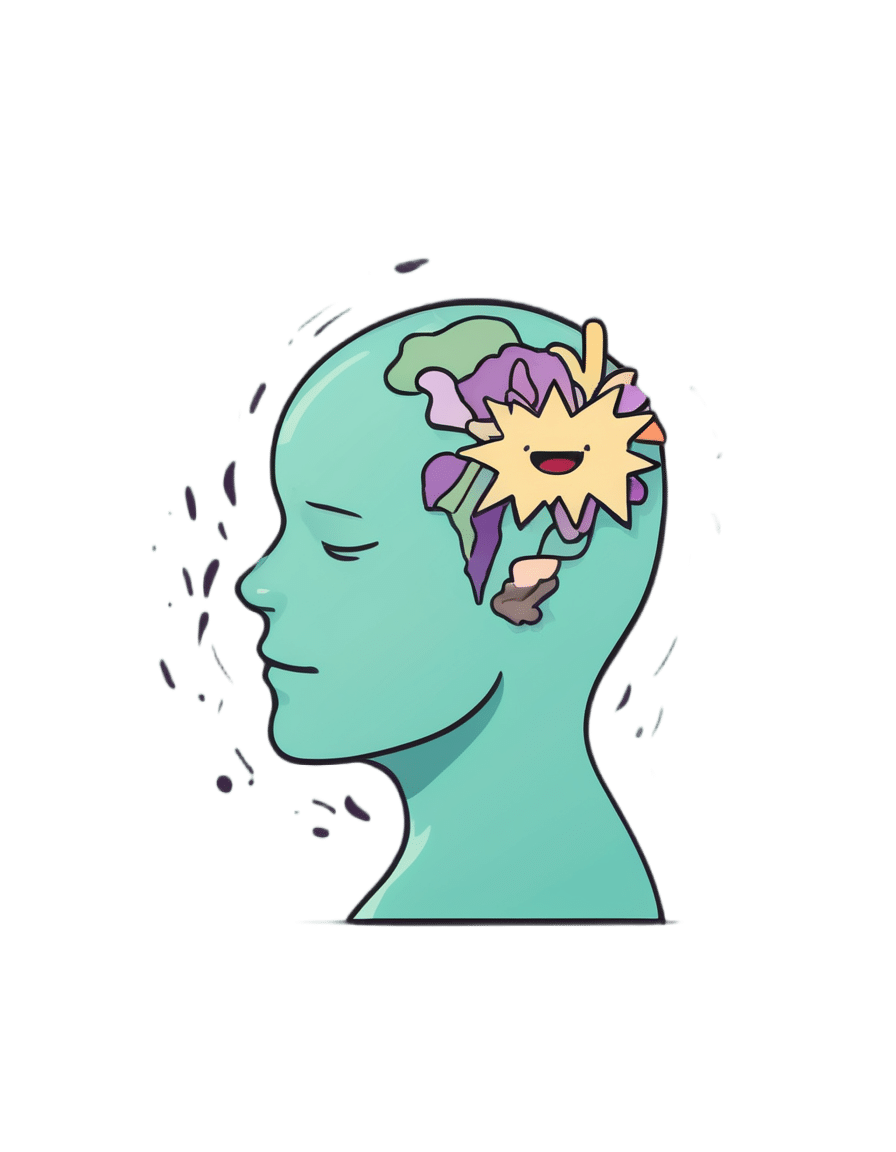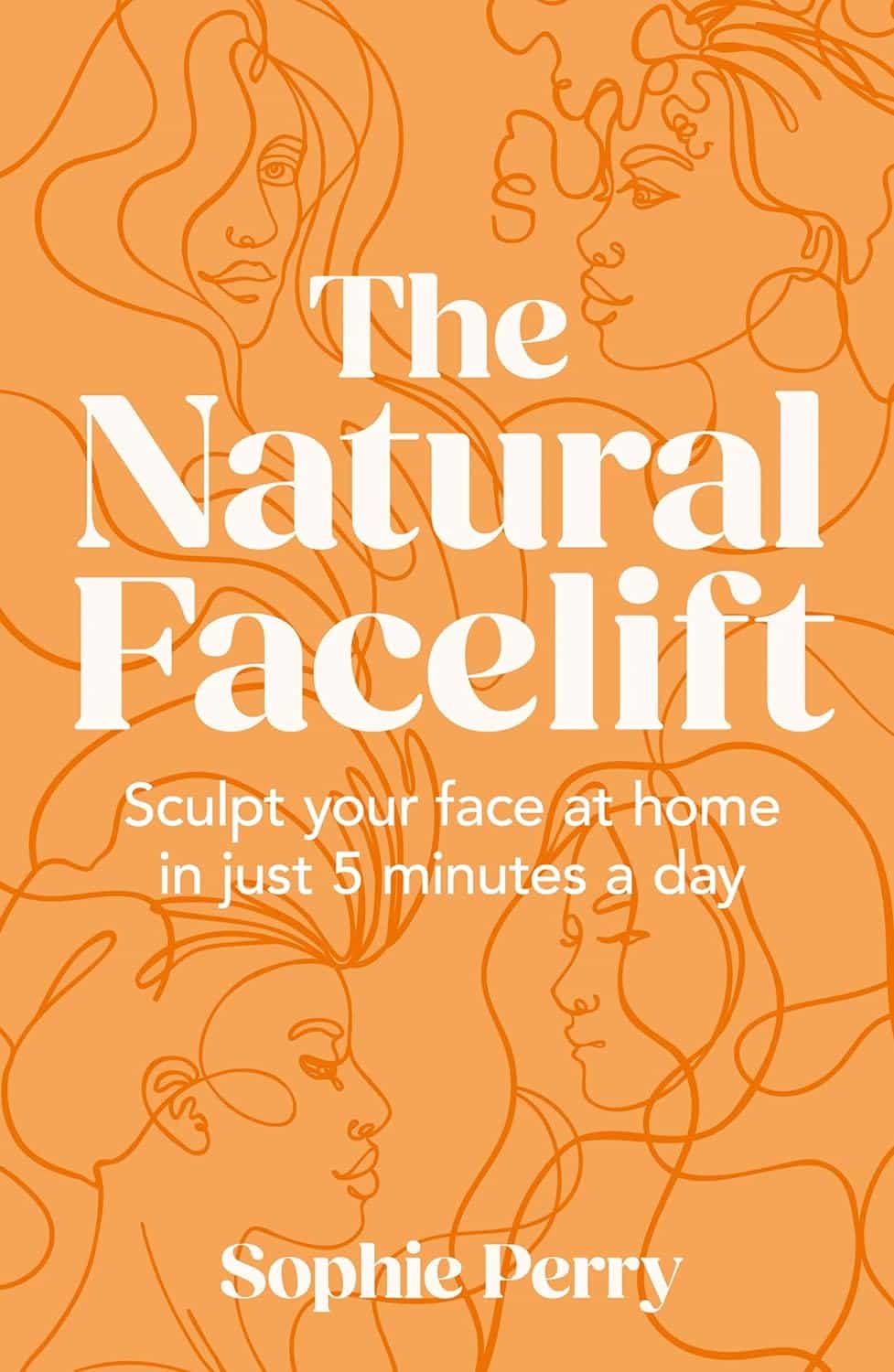
How often should you wash your sheets and towels?
10almonds is reader-supported. We may, at no cost to you, receive a portion of sales if you purchase a product through a link in this article.
Everyone seems to have a different opinion when it comes to how often towels and bed sheets should be washed. While many people might wonder whether days or weeks is best, in one survey from the United Kingdom, almost half of single men reported not washing their sheets for up to four months at a time.
It’s fairly clear that four months is too long to leave it, but what is the ideal frequency?
Bed linen and towels are quite different and so should be washed at different intervals. While every week or two will generally suffice for sheets, towels are best washed every few days.
Anyway, who doesn’t love the feeling of a fresh set of sheets or the smell of a newly laundered towel?
Why you should wash towels more often
When you dry yourself, you deposit thousands of skin cells and millions of microbes onto the towel. And because you use your towel to dry yourself after a shower or bath, your towel is regularly damp.
You also deposit a hefty amount of dead skin, microbes, sweat and oils onto your sheets every night. But unless you’re a prolific night sweater, your bedding doesn’t get wet after a night’s sleep.
Towels are also made of a thicker material than sheets and therefore tend to stay damp for longer.
So what is it about the dampness that causes a problem? Wet towels are a breeding ground for bacteria and moulds. Moulds especially love damp environments. Although mould won’t necessarily be visible (you would need significant growth to be able to see it) this can lead to an unpleasant smell.
As well as odours, exposure to these microbes in your towels and sheets can cause asthma, allergic skin irritations, or other skin infections.

http://rawpixel.com/Shutterstock
So what’s the ideal frequency?
For bedding, it really depends on factors such as whether you have a bath or shower just before going to bed, or if you fall into bed after a long, sweaty day and have your shower in the morning. You will need to wash your sheets more regularly in the latter case. As a rule of thumb, once a week or every two weeks should be fine.
Towels should ideally be washed more regularly – perhaps every few days – while your facecloth should be cleaned after every use. Because it gets completely wet, it will be wet for a longer time, and retain more skin cells and microbes.
Wash your towels at a high temperature (for example, 65°C) as that will kill many microbes. If you are conscious of saving energy, you can use a lower temperature and add a cup of vinegar to the wash. The vinegar will kill microbes and prevent bad smells from developing.
Clean your washing machine regularly and dry the fold in the rubber after every wash, as this is another place microbes like to grow.
Smelly towels
What if you regularly wash your towels, but they still smell bad? One of the reasons for this pong could be that you’ve left them in the washing machine too long after the wash. Especially if it was a warm wash cycle, the time they’re warm and damp will allow microbes to happily grow. Under lab conditions the number of these bacteria can double every 30 minutes.
It’s important to hang your towel out to dry after use and not to leave towels in the washing machine after the cycle has finished. If possible, hang your towels and bedding out in the sun. That will dry them quickly and thoroughly and will foster that lovely fresh, clean cotton smell. Using a dryer is a good alternative if the weather is bad, but outdoors in the sun is always better if possible.
Also, even if your towel is going to be washed, don’t throw a wet towel into the laundry basket, as the damp, dirty towel will be an ideal place for microbes to breed. By the time you get to doing your washing, the towel and the other laundry around it may have acquired a bad smell. And it can be difficult to get your towels smelling fresh again.

New Africa/Shutterstock
What about ‘self-cleaning’ sheets and towels?
Some companies sell “quick-dry” towels or “self-cleaning” towels and bedding. Quick-dry towels are made from synthetic materials that are weaved in a way to allow them to dry quickly. This would help prevent the growth of microbes and the bad smells that develop when towels are damp for long periods of time.
But the notion of self-cleaning products is more complicated. Most of these products contain nanosilver or copper, antibacterial metals that kill micro-organisms. The antibacterial compounds will stop the growth of bacteria and can be useful to limit smells and reduce the frequency with which you need to clean your sheets and towels.
However, they’re not going to remove dirt like oils, skin flakes and sweat. So as much as I would love the idea of sheets and towels that clean themselves, that’s not exactly what happens.
Also, excessive use of antimicrobials such as nanosilver can lead to microbes becoming resistant to them.
Rietie Venter, Associate professor, Clinical and Health Sciences, University of South Australia
This article is republished from The Conversation under a Creative Commons license. Read the original article.
Don’t Forget…
Did you arrive here from our newsletter? Don’t forget to return to the email to continue learning!
Recommended
Learn to Age Gracefully
Join the 98k+ American women taking control of their health & aging with our 100% free (and fun!) daily emails:
-
Three-Bean Chili & Cashew Cream
10almonds is reader-supported. We may, at no cost to you, receive a portion of sales if you purchase a product through a link in this article.
A hearty classic with a twist! Delicious and filling and full of protein, fiber, and powerful phytonutrients (including heavy-hitters ergothioneine and lycopene), this recipe is also quite flexible, so you can always add in extra seasonal vegetables if you like (to get you started: cherry tomatoes in summer and sweet potato in fall are fine options)!
You will need
- 1 cup low-sodium vegetable stock (ideally you made it yourself from vegetable offcuts you kept in the freezer for this purpose, but if not, you should be able to find low-sodium stock cubes)
- 1 can kidney beans, drained and rinsed
- 1 can black beans, drained and rinsed
- 1 can chickpeas, drained and rinsed
- 2 cans chopped tomatoes
- 1 onion, finely chopped
- 1 carrot, diced
- 2 celery sticks, chopped
- 4 oz mushrooms, chopped
- ½ bulb garlic, crushed
- 2 tbsp tomato purée
- 1 red chili pepper, finely chopped (multiply per your heat preferences)
- 1 tbsp ground paprika
- 1 tbsp black pepper, coarse ground
- 2 tsp fresh rosemary (or 1 tbsp dried)
- 2 tsp fresh thyme (or 1 tbsp dried)
- 1 tsp ground cumin
- ½ tsp MSG or 1 tsp low-sodium salt
- Extra virgin olive oil
For the cashew cream:
- 6 oz cashews, soaked in kettle-hot water for at least 15 minutes
- 1 tbsp nutritional yeast
- 1 tsp lemon juice
To serve:
- Handful of chopped parsley
- Your carbohydrates of choice; we recommend our Tasty Versatile Rice recipe, and/or our Delicious Quinoa Avocado Bread recipe.
Method
(we suggest you read everything at least once before doing anything)
1) Heat some olive oil in a skillet and fry the onion for about 5 minutes, stirring as necessary.
2) Add the garlic and chili and cook for a further 1 minute.
3) Add the celery, carrot, and mushrooms and continue cooking for 1–2 minutes.
4) Add everything else from the main section, taking care to stir well to distribute the seasonings evenly. Reduce the heat and allow to simmer for around 20 minutes, stirring occasionally.
5) While you are waiting, drain the cashews, and add them to a high-speed blender with ½ cup (fresh) cold water, as well as the nutritional yeast and lemon juice. Blend on full power until smooth; this may take about 3 minutes, so we recommend doing it in 30-second bursts to avoid overheating the motor. You’ll also probably need to scrape it down the sides at least once. You can add a little more water if you want the cream to be thinner than it is appearing, but go slowly if you do.
6) Serve with rice, adding a dollop of the cream and garnishing with parsley, with bread on the side if you like.
Enjoy!
Want to learn more?
For those interested in some of the science of what we have going on today:
- What’s Your Plant Diversity Score?
- Three Daily Servings of Beans?
- Kidney Beans or Black Beans – Which is Healthier?
- What Matters Most For Your Heart?
- “The Longevity Vitamin” (That’s Not A Vitamin)
- Lycopene’s Benefits For The Gut, Heart, Brain, & More
- Our Top 5 Spices: How Much Is Enough For Benefits?
Take care!
Share This Post
-
The Gym For Your Mental Health
10almonds is reader-supported. We may, at no cost to you, receive a portion of sales if you purchase a product through a link in this article.
Getting The Most Out Of Therapy
If you’ve never had therapy, what image do you have of it? Perhaps you imagine a bearded and bespectacled man in a suit, impassively making notes on a clipboard. Perhaps you imagine an empathetic woman, with tissues and camomile tea on standby.
The reality is: the experience of therapy can vary, a lot.
In its results, too! Sometimes we may try therapy and think “well that was a waste of time and money”. Sometimes we may try therapy and it’ll change our life.
So… Is there any way to make it less of a lottery?
First: knowledge is power
And while the therapist-client relationship certainly shouldn’t be a power struggle, you do want to be empowered.
So, read about different styles of therapy, and also, read some how-to guides for self-therapy. We’ve recommended some before in previous editions of 10almonds; you can check those books out here:
- How to Be Your Own Therapist: Boost your mood and reduce your anxiety in 10 minutes a day – by Owen O’Kane
- You Are the One You’ve Been Waiting For: Applying Internal Family Systems to Intimate Relationships – by Dr. Richard Schwartz
- DBT Made Simple: A Step-by-Step Guide to Dialectical Behavior Therapy – by Sheri van Dijk
- How to Do the Work: Recognize Your Patterns, Heal from Your Past, and Create Your Self – by Dr. Nicole LaPera
This will serve two purposes:
- You’ll know what to expect out of a therapist
- You can more efficiently “get to work” in therapy
It also, of course, could help you already, without even going to therapy!
Second: begin with the end in mind
A person who does not know what they want to get out of therapy, will likely not get much out of therapy. Or rather, their first task will be to figure that out. So, figure it out in advance, if you can.
Maybe you have a problem that has a specific name, for example poor self-esteem, anxiety, stress, depression, trauma, neuroticism, phobia, etc.
This isn’t Alcoholics Anonymous, and in this case you don’t want a lifetime of “Hello, my name is ______ and I have ______”, if you can help it.
So, what do you want?
- Maybe you want to be able to go to social events without feeling anxious
- Maybe you want your relationship(s) to be more secure and fulfilling
- Maybe you want to no longer have nightmares about that traumatic thing
- Maybe you want to be able to greet each day’s tasks with confidence and without overwhelm
…etc.
A good therapist will help you to set such goals (if you haven’t already), and attain them.
If you’re going the self-therapy route, then this is your job now!
It will probably start with the question: imagine that everything currently troubling you is now healed.
What would that look like, to you?
Third: get a good match for you
Unless you are going entirely the self-therapy route (which can work for some), you will want a therapist who’s a good match for you.
It may take a degree of “suck it and see” trial runs before you find the right one, but that takes time and money, so you’ll want to streamline the process as much as you can. If you do this well, you may be able to find a good therapist for you first time.
For this, personal recommendations (such as from friends) may help more than exmaining academic and institutional affiliations.
Yes, you want a well-qualified therapist who is a member in good standing of a respectable regulated body… but whether your therapist is easy for you to “get on with” will matter at least as much as whether their approach is psychodynamic, or 4th wave CBT, or IFS, or whatever seems popular in your time and place.
Bear in mind:
- Some therapists are specialized in helping with some kinds of things and not others. It will obviously help if the therapist you choose is specialized in the thing you are seeking help for.
- Some therapists may be able to relate to you better (or not), based on simple factors of who they are. To this end, while your therapist certainly doesn’t have to be a mirror image of you, factors like age, gender, race, etc can be relevant and may be worth considering, depending on what you are seeking help with, and what factors impact that thing.
Prefer keeping things to yourself?
Therapy isn’t for everyone, but having a good relationship with oneself definitely is. You might want to invest in one of the books whose reviews we linked above, and you might also get value from previous Psychology Sunday articles, which you can find in our archive (every seventh edition here has a Psychology Sunday main feature):
Click Here To Check Out The 10almonds Archive
To borrow the catchphrase of Dr. Kirk Honda (a therapist and therapy educator with decades of experience):
❝Take care of yourself, because you deserve it; you really, really do.❞
Share This Post
-
In Crisis, She Went to an Illinois Facility. Two Years Later, She Still Isn’t Able to Leave.
10almonds is reader-supported. We may, at no cost to you, receive a portion of sales if you purchase a product through a link in this article.
Series: Culture of Cruelty:Inside Illinois’ Mental Health System
State-run facilities in Illinois are supposed to care for people with mental and developmental disabilities. But patients have been subjected to abuse, neglect and staff misconduct for decades, despite calls for change.
Kaleigh Rogers was in crisis when she checked into a state-run institution on Illinois’ northern border two years ago. Rogers, who has cerebral palsy, had a mental health breakdown during the pandemic and was acting aggressively toward herself and others.
Before COVID-19, she had been living in a small group home; she had been taking college classes online and enjoyed going out with friends, volunteering and going to church. But when her aggression escalated, she needed more medical help than her community setting could provide.
With few viable options for intervention, she moved into Kiley Developmental Center in Waukegan, a much larger facility. There, she says she has fewer freedoms and almost nothing to do, and was placed in a unit with six other residents, all of whom are unable to speak. Although the stay was meant to be short term, she’s been there for two years.
The predicament facing Rogers and others like her is proof, advocates say, that the state is failing to live up to the promise it made in a 13-year-old federal consent decree to serve people in the community.
Rogers, 26, said she has lost so much at Kiley: her privacy, her autonomy and her purpose. During dark times, she cries on the phone to her mom, who has reduced the frequency of her visits because it is so upsetting for Rogers when her mom has to leave.
The 220-bed developmental center about an hour north of Chicago is one of seven in the state that have been plagued by allegations of abuse and other staff misconduct. The facilities have been the subject of a monthslong investigation by Capitol News Illinois and ProPublica about the state’s failures to correct poor conditions for people with intellectual and developmental disabilities. The news organizations uncovered instances of staff who had beaten, choked, thrown, dragged and humiliated residents inside the state-run facilities.
Advocates hoped the state would become less reliant on large institutions like these when they filed a lawsuit in 2005, alleging that Illinois’ failure to adequately fund community living options ended up segregating people with intellectual and developmental disabilities from society by forcing them to live in institutions. The suit claimed Illinois was in direct violation of a 1999 U.S. Supreme Court decision in another case, which found that states had to serve people in the most integrated setting of their choosing.
Negotiations resulted in a consent decree, a court-supervised improvement plan. The state agreed to find and fund community placements and services for individuals covered by the consent decree, thousands of adults with intellectual and developmental disabilities across Illinois who have put their names on waiting lists to receive them.
Now, the state has asked a judge to consider ending the consent decree, citing significant increases in the number of people receiving community-based services. In a court filing in December, Illinois argued that while its system is “not and never will be perfect,” it is “much more than legally adequate.”
But advocates say the consent decree should not be considered fulfilled as long as people with disabilities continue to live without the services and choices that the state promised.
Across the country, states have significantly downsized or closed their large-scale institutions for people with developmental and intellectual disabilities in favor of smaller, more integrated and more homelike settings.
But in Illinois, a national outlier, such efforts have foundered. Efforts to close state-operated developmental centers have been met with strong opposition from labor unions, the communities where the centers are located, local politicians and some parents.
U.S. District Judge Sharon Johnson Coleman in Chicago is scheduled in late summer to decide whether the state has made enough progress in building up community supports to end the court’s oversight.
For some individuals like Rogers, who are in crisis or have higher medical or behavioral challenges, the state itself acknowledges that it has struggled to serve them in community settings. Rogers said she’d like to send this message on behalf of those in state-operated developmental centers: “Please, please get us out once and for all.”
“Living Inside a Box”
Without a robust system of community-based resources and living arrangements to intervene during a crisis, state-operated developmental centers become a last resort for people with disabilities. But under the consent decree agreement, the state, Equip for Equality argues, is expected to offer sufficient alternative crisis supports to keep people who want them out of these institutions.
In a written response to questions, Rachel Otwell, a spokesperson for the Illinois Department of Human Services, said the state has sought to expand the menu of services it offers people experiencing a crisis, in an effort to keep them from going into institutions. But Andrea Rizor, a lawyer with Equip for Equality, said, “They just don’t have enough to meet the demand.”
For example, the state offers stabilization homes where people can live for 90 days while they receive more intensive support from staff serving the homes, including medication reviews and behavioral interventions. But there are only 32 placements available — only four of them for women — and the beds are always full, Rizor said.
Too many people, she said, enter a state-run institution for short-term treatment and end up stuck there for years for various reasons, including shortcomings with the state’s discharge planning and concerns from providers who may assume those residents to be disruptive or difficult to serve without adequate resources.
That’s what happened to Rogers. Interruptions to her routine and isolation during the pandemic sent her anxiety and aggressive behaviors into overdrive. The staff at her community group home in Machesney Park, unsure of what to do when she acted out, had called the police on several occasions.
Doctors also tried to intervene, but the cocktail of medications she was prescribed turned her into a “zombie,” Rogers said. Stacey Rogers, her mom and legal guardian, said she didn’t know where else to turn for help. Kiley, she said, “was pretty much the last resort for us,” but she never intended for her daughter to be there for this long. She’s helped her daughter apply to dozens of group homes over the past year. A few put her on waitlists; most have turned her down.
“Right now, all she’s doing is living inside a box,” Stacey Rogers said.
Although Rogers gave the news organizations permission to ask about her situation, IDHS declined to comment, citing privacy restrictions. In general, the IDHS spokesperson said that timelines for leaving institutions are “specific to each individual” and their unique preferences, such as where they want to live and speciality services they may require in a group home.
Equip for Equality points to people like Rogers to argue that the consent decree has not been sufficiently fulfilled. She’s one of several hundred in that predicament, the organization said.
“If the state doesn’t have capacity to serve folks in the community, then the time is not right to terminate this consent decree, which requires community capacity,” Rizor said.
Equip for Equality has said that ongoing safety issues in these facilities make it even more important that people covered by the consent decree not be placed in state-run institutions. In an October court brief, citing the news organizations’ reporting, Equip for Equality said that individuals with disabilities who were transferred from community to institutional care in crisis have “died, been raped, and been physically and mentally abused.”
Over the summer, an independent court monitor assigned to provide expert opinions in the consent decree, in a memo to the court, asked a judge to bar the state from admitting those individuals into its institutions.
In its December court filing, the state acknowledged that there are some safety concerns inside its state-run centers, “which the state is diligently working on,” as well as conditions inside privately operated facilities and group homes “that need to be addressed.” But it also argued that conditions inside its facilities are outside the scope of the consent decree. The lawsuit and consent decree specifically aimed to help people who wanted to move out of large private institutions, but plaintiffs’ attorneys argue that the consent decree prohibits the state from using state-run institutions as backup crisis centers.
In arguing to end the consent decree, the state pointed to significant increases in the number of people served since it went into effect. There were about 13,500 people receiving home- and community-based services in 2011 compared with more than 23,000 in 2023, it told the court.
The state also said it has significantly increased funding that is earmarked to pay front-line direct support professionals who assist individuals with daily living needs in the community, such as eating and grooming.
In a statement to reporters, the human services department called these and other improvements to the system “extraordinary.”
Lawyers for the state argued that those improvements are enough to end court oversight.
“The systemic barriers that were in place in 2011 no longer exist,” the state’s court filing said.
Among those who were able to find homes in the community is Stanley Ligas, the lead plaintiff in the lawsuit that led to the consent decree. When it was filed in 2005, he was living in a roughly 100-bed private facility but wanted to move into a community home closer to his sister. The state refused to fund his move.
Today, the 56-year-old lives in Oswego with three roommates in a house they rent. All of them receive services to help their daily living needs through a nonprofit, and Ligas has held jobs in the community: He previously worked in a bowling alley and is now paid to make public appearances to advocate for others with disabilities. He lives near his sister, says he goes on family beach vacations and enjoys watching professional wrestling with friends. During an interview with reporters, Ligas hugged his caregiver and said he’s “very happy” and hopes others can receive the same opportunities he’s been given.
While much of that progress has come only in recent years, under Gov. JB Pritzker’s administration, it has proven to be vulnerable to political and economic changes. After a prolonged budget stalemate, the court in 2017 found Illinois out of compliance with the Ligas consent decree.
At the time, late and insufficient payments from the state had resulted in a staffing crisis inside community group homes, leading to escalating claims of abuse and neglect and failures to provide routine services that residents relied on, such as help getting to work, social engagements and medical appointments in the community. Advocates worry about what could happen under a different administration, or this one, if Illinois’ finances continue to decline as projected.
“I acknowledge the commitments that this administration has made. However, because we had so far to come, we still have far to go,” said Kathy Carmody, chief executive of The Institute on Public Policy for People with Disabilities, which represents providers.
While the wait for services is significantly shorter than it was when the consent decree went into effect in 2011, there are still more than 5,000 adults who have told the state they want community services but have yet to receive them, most of them in a family home. Most people spend about five years waiting to get the services they request. And Illinois continues to rank near the bottom in terms of the investment it makes in community-based services, according to a University of Kansas analysis of states’ spending on services for people with intellectual and developmental disabilities.
Advocates who believe the consent decree has not been fulfilled contend that Illinois’ continued reliance on congregate settings has tied up funds that could go into building up more community living options. Each year, Illinois spends about $347,000 per person to care for those in state-run institutions compared with roughly $91,000 per person spent to support those living in the community.
For Rogers, the days inside Kiley are long, tedious and sometimes chaotic. It can be stressful, but Rogers told reporters that she uses soothing self-talk to calm herself when she feels sad or anxious.
“I tell myself: ‘You are doing good. You are doing great. You have people outside of here that care about you and cherish you.’”
This article is republished from ProPublica under a Creative Commons license. Read the original article.
Share This Post
Related Posts
-
Strawberries vs Blackberries – Which is Healthier?
10almonds is reader-supported. We may, at no cost to you, receive a portion of sales if you purchase a product through a link in this article.
Our Verdict
When comparing strawberries to blackberries, we picked the blackberries.
Why?
Shocking nobody, both are very healthy options. However, blackberries do come out on top:
In terms of macros, the main thing that sets them apart is that blackberries have more than 2x the fiber. Other differences in macros are also in blackberries’ favor, but only very marginally, so we’ll not distract with those here. The fiber difference is distinctly significant, though.
In the category of vitamins, blackberries lead with more of vitamins A, B2, B3, B5, B9, E, and K, as well as more choline. Meanwhile, strawberries boast more of vitamins B1, B6, and C. So, a 8:2 advantage for blackberries (and some of the margins are very large, such as 9x more choline, 4x more vitamin E, and nearly 18x more vitamin A).
When it comes to minerals, things are not less clear: blackberries have considerably more calcium, copper, iron, magnesium, manganese, and zinc. The two fruits are equal in other minerals that they both contain, and strawberries don’t contain any mineral in greater amounts than blackberries do.
A discussion of these berries’ health benefits would be incomplete without at least mentioning polyphenols, but both of them are equally good sources of such, so there’s no distinction to set one above the other in this category.
As ever, enjoy both, though! Diversity is good.
Want to learn more?
You might like to read:
- Strawberries vs Cherries – Which is Healthier?
- Blackberries vs Blueberries – Which is Healthier?
- Strawberries vs Raspberries – Which is Healthier?
Take care!
Don’t Forget…
Did you arrive here from our newsletter? Don’t forget to return to the email to continue learning!
Learn to Age Gracefully
Join the 98k+ American women taking control of their health & aging with our 100% free (and fun!) daily emails:
-
Turmeric (Curcumin) Dos and Don’ts With Dr. Kim
10almonds is reader-supported. We may, at no cost to you, receive a portion of sales if you purchase a product through a link in this article.
Turmeric is a fabulous spice, most well-known for its anti-inflammatory powers; its antioxidant effects benefit all of the body, including the brain. While it fights seemingly everything from arthritis to atherosclerosis to Alzheimer’s and more, it also boosts brain-derived neurotrophic factor, looks after your cardiovascular health, holds back diabetes, reduces the risk of cancer, fights depression, slows aging, and basically does everything short of making you sing well too.
Dr. Leonid Kim goes over the scientific evidence for these, and also talks about some of the practicalities of taking turmeric, and safety considerations.
For the most part, turmeric is very safe even at high doses (up to 8g at least); indeed, at smaller doses (e.g. 500mg) it largely does the same job as non-steroidal anti-inflammatory drugs (NSAIDs) such as ibuprofen, with fewer problems.
It also does the job of several antidiabetic medications, by increasing uptake of glucose (thus reducing blood sugar levels) while simultaneously decreasing the glucose secretion from the liver. It does this by regulating the AMPK signalling pathway, just like metformin—while again, being safer.
Dr. Kim also looks at the (good!) evidence for turmeric in managing PCOS and undoing NAFLD; so far, so good.
Dosage: he bids us pay attention whether we’re taking it as turmeric itself or as curcumin standardized extract. The latter is the active compound, and in principle more powerful, but in practice it can get metabolized too quickly and easily—before it can have its desired effect. So, turmeric itself is a very good choice.
Absorption: since we do want it to be absorbed well, though, he does recommend taking it with piperine (as in black pepper).
You may be thinking: isn’t this going to cause the same problem you were just talking about, and cause it to be metabolized too quickly? And the answer is: no! How piperine works is almost the opposite; it protects the curcumin in the turmeric from our digestive enzymes, and thus allows them to get absorbed without being broken down too quickly—thus increasing the bioavailability by slowing the process down.
Lipophilia: no, that’s not a disease (or a fetish), rather it means that curcumin is soluble in fats, so we should take it near in time to a meal that contains at least a tablespoon of oil in total (so if you’re cooking a curry with your turmeric, this need is covered already, for example).
Supplement provenance: he recommends picking a supplement that’s been tested by a reputable 3rd party, as otherwise turmeric can be quite prone to impurities (which can include lead and arsenic, so, not great).
Contraindications: for some people, curcumin can cause gastrointestinal issues (less likely if taking with meals), and also, it can interact with blood-thinners. While taking aspirin or curcumin alone might help avoid circulatory problems, taking both could increase the bleeding risk for some people, for example. Similarly, if taking curcumin and metformin while diabetic, one must watch out for the combination being too effective at lowering blood sugar levels, and thus causing hypoglycemia instead. Similar deal with blood pressure medications.
There’s more in the video though (yes really; we know we wrote a lot but it’s information-dense), so do check it out:
Click Here If The Embedded Video Doesn’t Load Automatically
Want to know more?
You can also check out our related articles:
Why Curcumin (Turmeric) Is Worth Its Weight In Gold
Black Pepper’s Impressive Anti-Cancer Arsenal (And More)Don’t Forget…
Did you arrive here from our newsletter? Don’t forget to return to the email to continue learning!
Learn to Age Gracefully
Join the 98k+ American women taking control of their health & aging with our 100% free (and fun!) daily emails:
-
The Natural Facelift – by Sophie Perry
10almonds is reader-supported. We may, at no cost to you, receive a portion of sales if you purchase a product through a link in this article.
First, what this book isn’t: it’s mostly not about beauty, and it’s certainly not about ageist ideals of “hiding” aging.
The author herself discusses the privilege that is aging (not everyone gets to do it) and the importance of taking thankful pride in our lived-in bodies.
The title and blurb belie the contents of the book rather. Doubtlessly the publisher felt that extrinsic beauty would sell better than intrinsic wellbeing. As for what it’s actually more about…
Ever splashed your face in cold water to feel better? This book’s about revitalising the complex array of facial muscles (there are anatomical diagrams) and the often-tired and very diverse tissues that cover them, complete with the array of nerve endings very close to your CNS (not to mention the vagus nerve running just behind your jaw), and some of the most important blood vessels of your body, serving your brain.
With all that in mind, this book, full of useful therapeutic techniques, is a very, very far cry from “massage like this and you’ll look like you got photoshopped”.
The style varies, as some parts of explanation of principles, or anatomy, and others are hands-on (literally) guides to the exercises, but it is all very clear and easy to understand/follow.
Bottom line: aspects of conventional beauty may be a side-effect of applying the invigorating exercises described in this book. The real beauty is—literally—more than skin-deep.
Click here to check out The Natural Facelift, and order yours!
Don’t Forget…
Did you arrive here from our newsletter? Don’t forget to return to the email to continue learning!
Learn to Age Gracefully
Join the 98k+ American women taking control of their health & aging with our 100% free (and fun!) daily emails:








